Gonzalo Pineda has been given the task of resurrecting Atlanta United‘s form after a number of disappointing seasons. After the loss of current Premier League player Miguel Almiron to Newcastle United, and Josef Martinez leaving for Inter Miami, who will soon be joined by Barcelona icon Lionel Messi, Atlanta have to find new players capable of driving the side to the top end of the table.
In what has been a solid start to the season, Atlanta have emerged as one of the more eye-catching sides, with the most goals scored (35) in the MLS as well as the second most conceded (29). 10 of these 35 goals have come through set-pieces, with the Argentinian Thiago Almada helping Atlanta stand out as a major threat from dead-ball situations.
In this tactical analysis, we will look into the tactics used by Atlanta United, with an in-depth analysis of how Thiago Almada has been crucial to the success of these methods. This set-piece analysis will look at why the different methods were effective and why they will remain a threat, even if teams catch wind of their routines.
Use of screens
A common method of chance creation from corners for Atalanta United has been through the use of screens. In the first part of the season, Atlanta have often come up against heavy zonal defences, thus leaving a lack of players available to man mark. As a result, the Atlanta attackers often have a numerical superiority around the penalty spot (4v3 pictured below), meaning the spare player is able to attack the cross unopposed.
Facing zonal defences means that even if a spare player can break through into the six-yard box, defenders are carefully positioned around the area to clear any incoming crosses into their zone. Atlanta have used screens effectively to eliminate these zonal defenders, in order to provide attackers with a clear path to goal. In the picture below, it is clear to see the player in red screening the near-side zonal defenders. The target in green can be seen without any markers in close proximity, which allows him to attack the incoming corner without any competition in the aerial duel which makes for an unopposed header from within six yards.
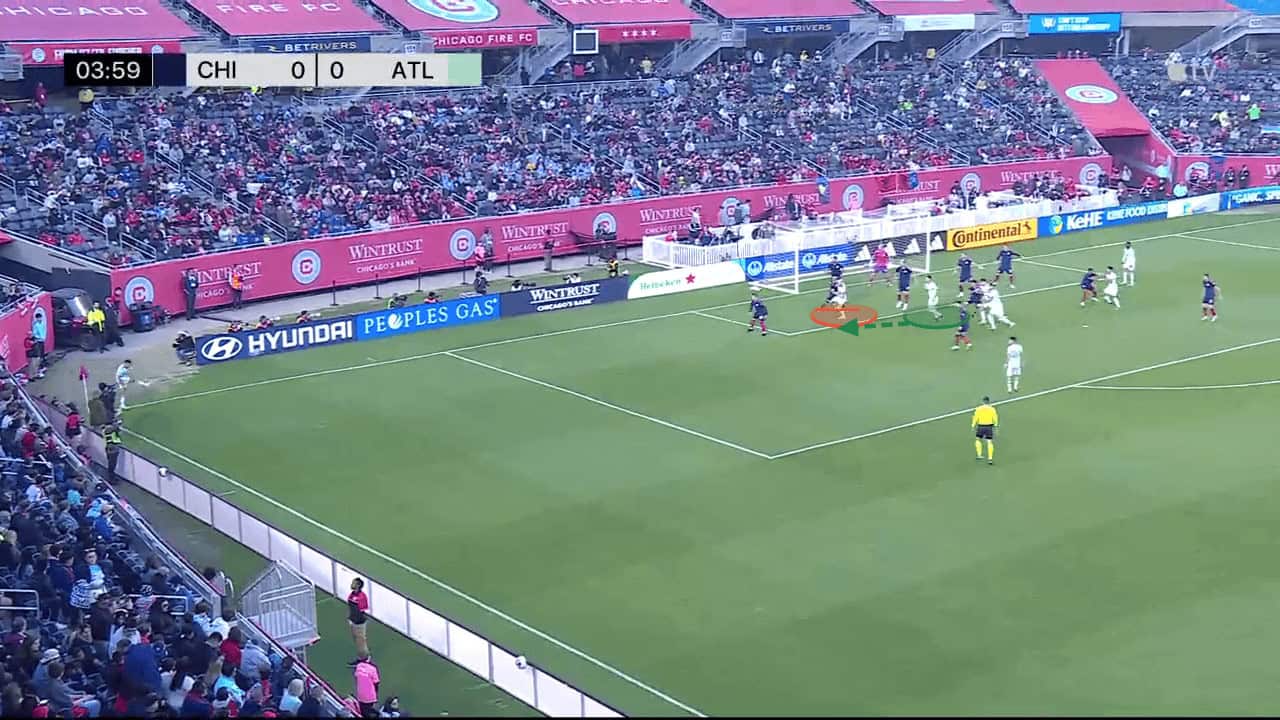
On other occasions, Atlanta have used screens in order to immobilise man markers when there is no numerical advantage for the attackers around the penalty spot. In the example below, there is a 4v4 around the penalty spot, meaning no attacker is free to attack the cross coming in.
There are many different methods to creating space for a specific player, and in these instances, Atlanta have preferred to simplify the role for the target player by allowing him to focus on connecting with the ball. Other teams task target players with making specifically timed runs or encouraging quick movement and feints to lose a marker and arrive in space. Sometimes, having multiple tasks causes players to have less focus on the headed effort, thus making the shots less accurate and inconsistent. By allowing the target players to only focus on the headed shot on goal, Atlanta have more consistency and threat in their set plays, although they may be easier to defend due to the lower amounts of movement inside the box.
In this example below, a floated cross to the back side of the six-yard box gives the player providing the screen (red) plenty of time to position himself in front of the target player’s marker. The target player (green) is then able to go for the aerial duel unopposed from 10 yards out.
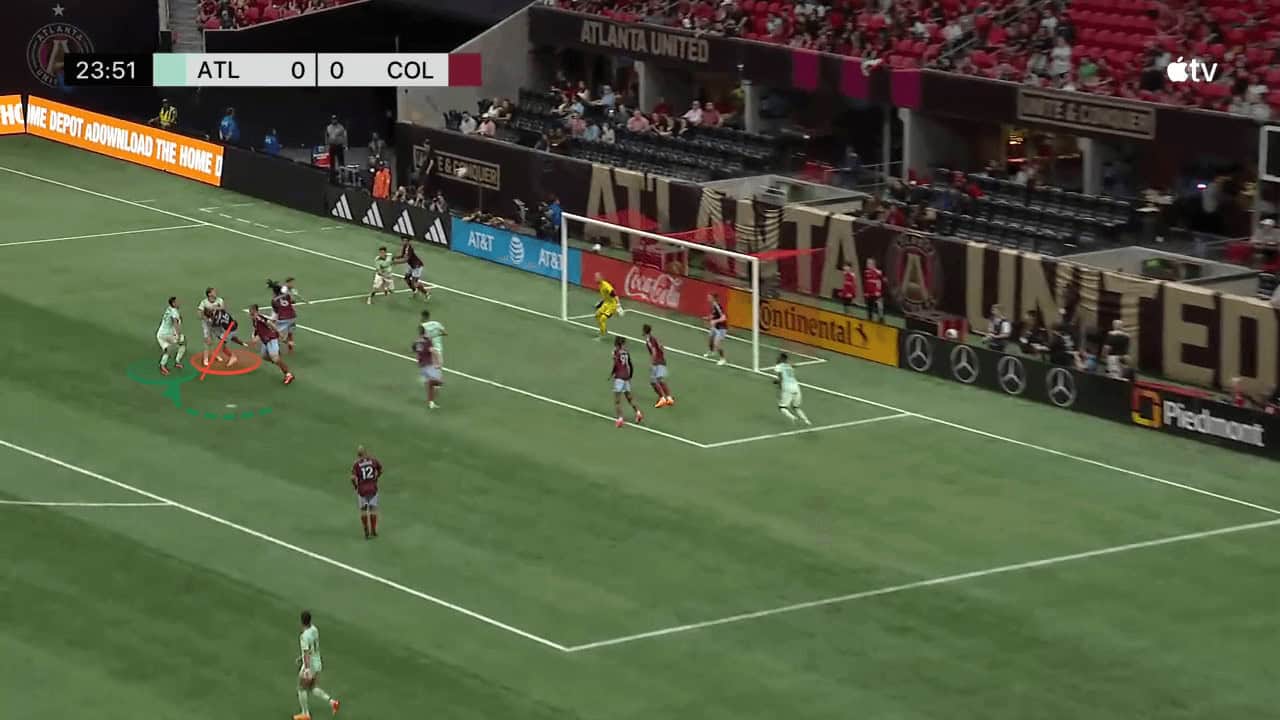
One other variation of a screen is the use of anchors where attackers plant themselves in front of a defender, to prevent them from moving towards the ball whilst allowing them to freely move towards any other attackers. The image below illustrates the player in red setting up in front of the defender, to prevent him from clearing the ball whilst a teammate attacks the space in front of them.
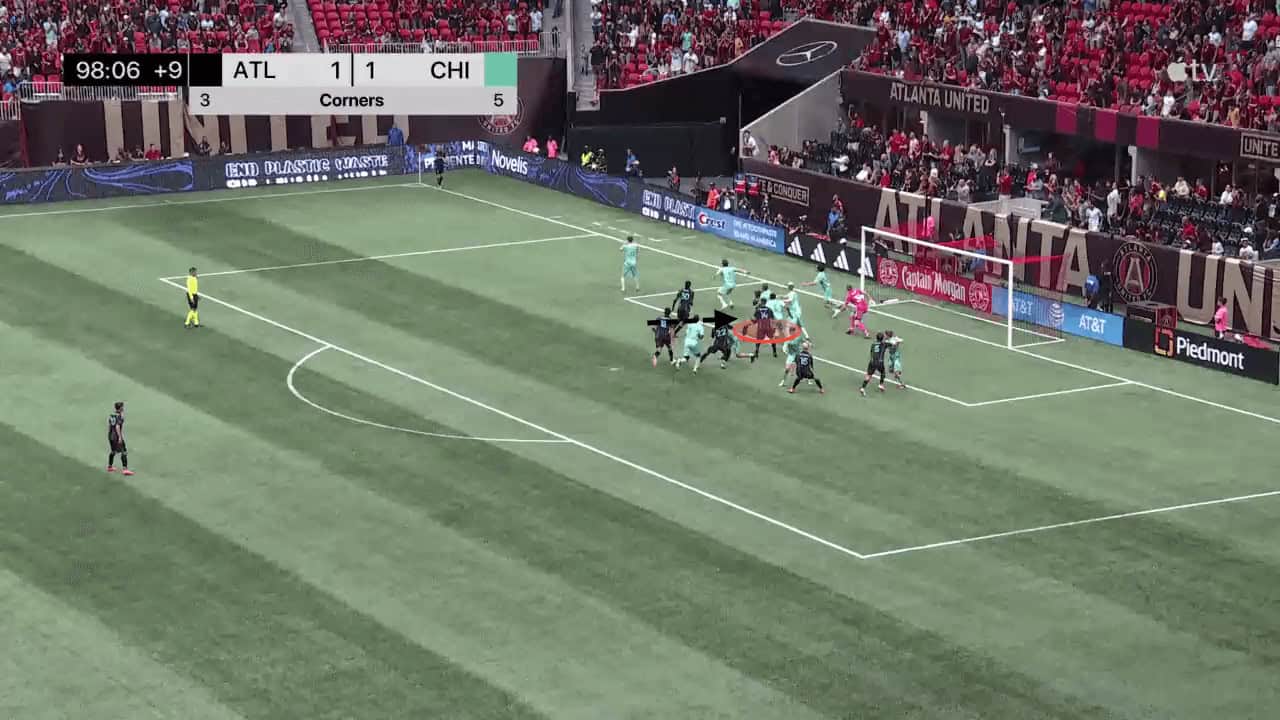
Utilising Almada’s excellent ball striking
Thiago Almada has been key to Atlanta’s success from dead-ball situations, because of his excellent ability to strike the ball with power and precision from anywhere on the pitch. Almada is able to whip balls with curve and can also strike dipping shots from range. This ability has also been used for creative purposes, with Almada using the pinpoint accuracy of his ball striking to deliver powerful crosses into tight spaces inside defensive blocks from dead ball scenarios.
Like in the example below, Almada is able to find the smallest spaces inside the six-yard box and deliver unstoppable crosses. He is able to whip the ball in with enough pace so that it is extremely difficult for defenders to react to and adjust their positions in time, whilst also making the ball dip in the right moment so it skips the near post zonal defender. When Almada is able to deliver such accurate crosses consistently, his teammates are able to attack the spaces early, timing the runs so that they are in the open space as the ball is delivered. When the ball is whipped in with such pace, players are only tasked with having to redirect the ball towards the goal rather than having to produce any power on the ball.
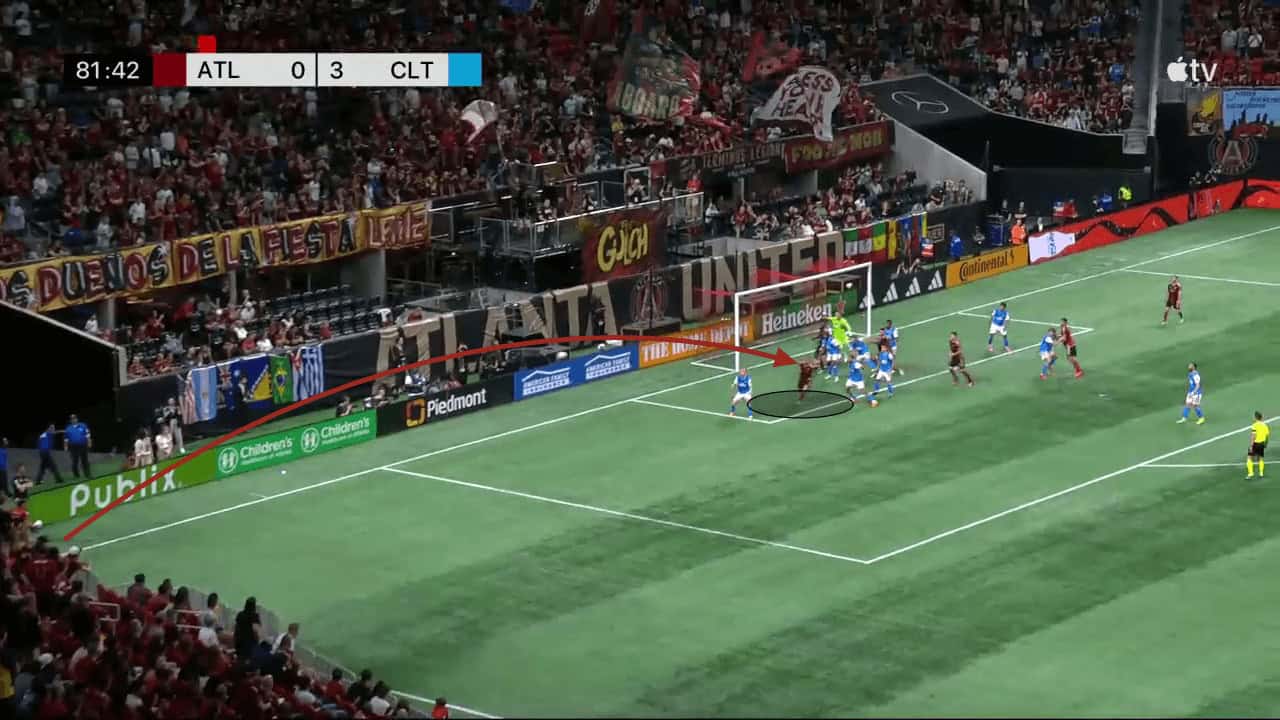
Below is another example of Almada being able to deliver precise and powerful crosses into dangerous areas. Usually, if a ball is crossed into the far side of the six-yard box, it is common for goalkeepers to claim the ball and the chance is wasted. However, with Almada’s ability to cross the ball in with pace, and maintain precision, he is able to cross the ball to that area, with the goalkeepers being thrown off by the pace of the ball and not having enough time to react and claim it.
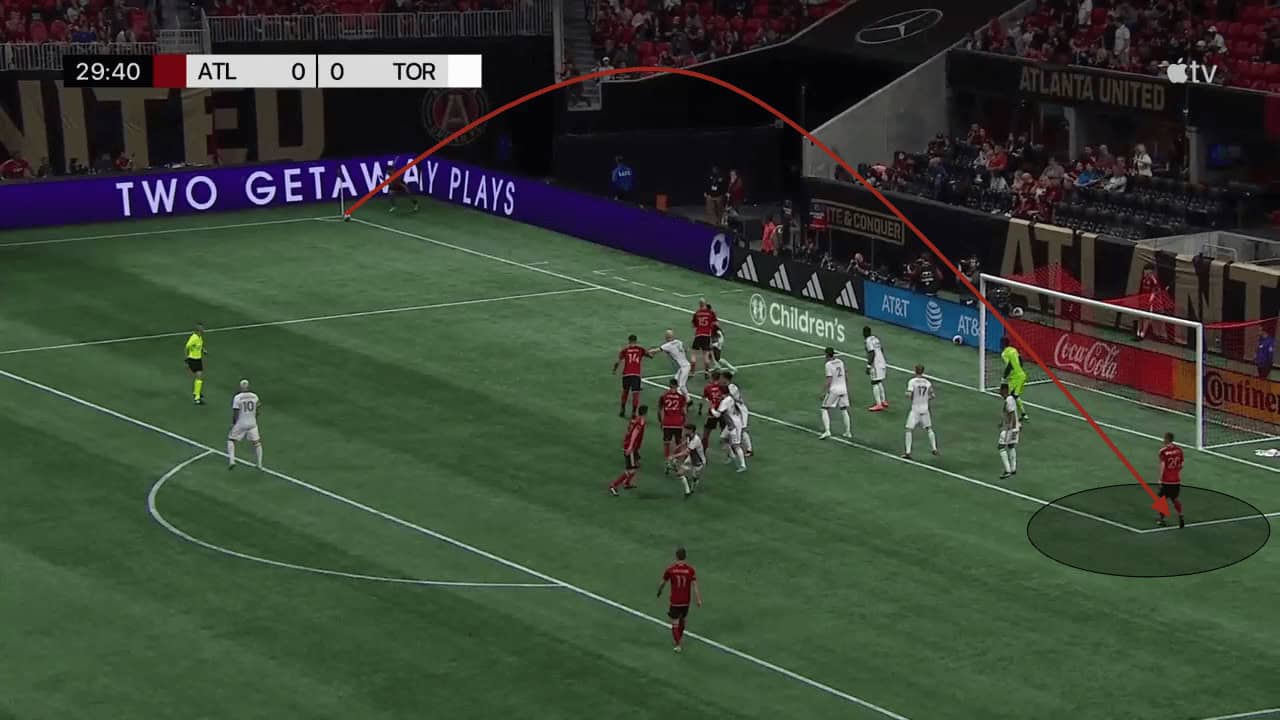
As a result, Atlanta have been able to sneak into the six-yard box at the far side, where players can pick out a teammate from a far smaller distance, with each player more likely to be in space due to defenders keeping their eyes on the ball and losing track of the players they should be marking. Pictured below, there are five clear attacking options with varying levels of space around them, which can be found by the player at the far side of the six-yard box.
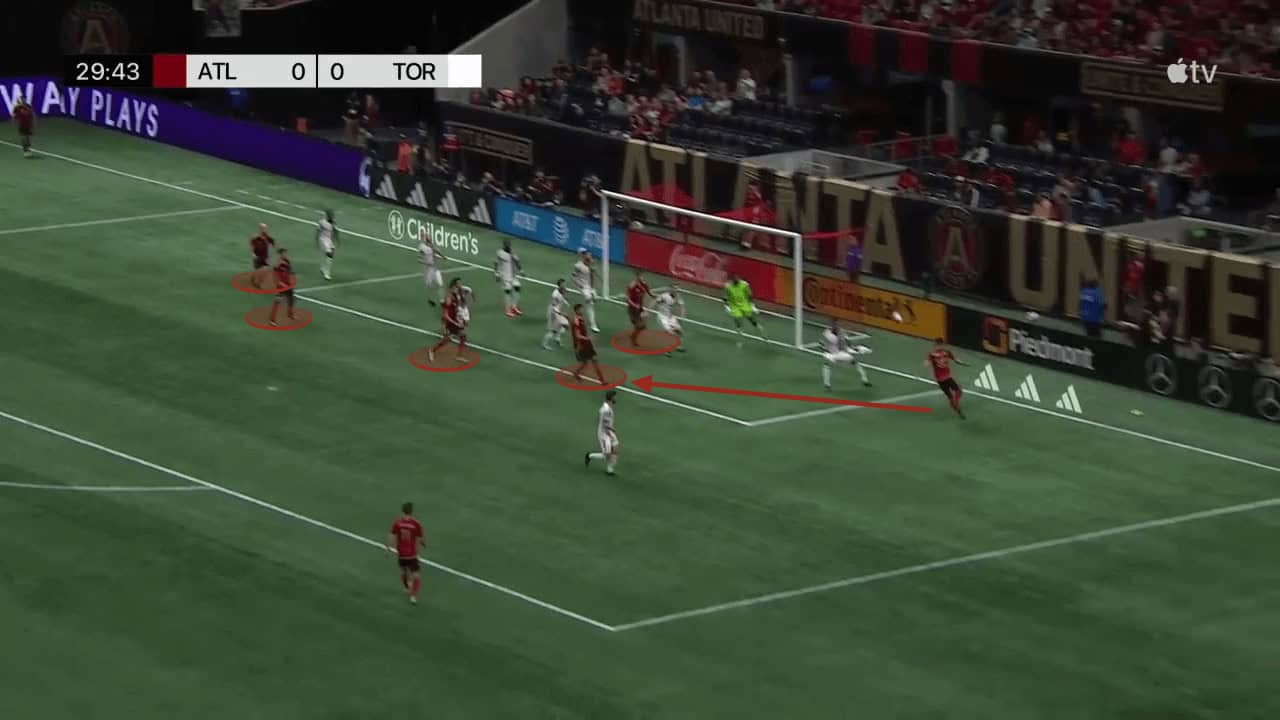
Another way in which Almada’s excellent shooting technique has been utilised has been through providing him with opportunities to take free shots from outside the box, without being under pressure from opponents. Having an unopposed shot from around 20 yards is an upgrade on a close-range free kick, as the ball rolling can lead to a more powerful strike as well as the sea of players in between the ball and goalkeeper meaning that it is difficult for the keeper to see and react to the shot in time.
One way in which Atlanta have utilised corner kicks to provide Almada space on the edge of the box has been through decoy runs. We can see in the picture below, the players highlighted in white are all making runs towards the six-yard box, with their runs being made early in order to bait the defenders into following them. This clearly creates the space at the edge of the box where the corner can be played into on the floor and Almada has plenty of time to set the ball up whilst defenders have to recover their positions after following the decoy runs.
The fact that Atlanta are willing to bet on a shot from distance in the 100th minute of a match when losing shows just how much confidence the club has in Almada, preferring this to a headed effort from within six yards.
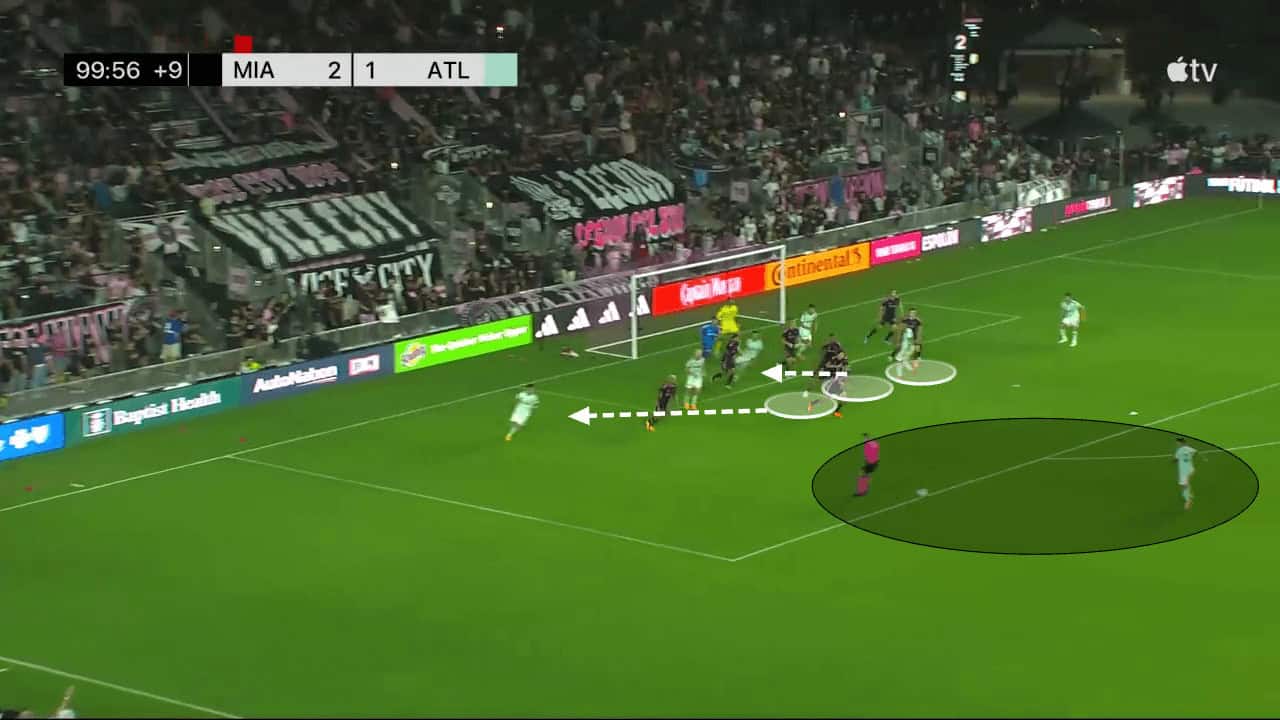
Below, we can see an alternate short corner routine to drag a defender away from the edge of the box. In this example, a defender starts at the edge of the box, preventing the possibility of a shot from range. In order to force that space to open up, Atlanta United play a few extra short passes, to force the player receiving the ball to be closed down which in turn creates space on the edge of the box.
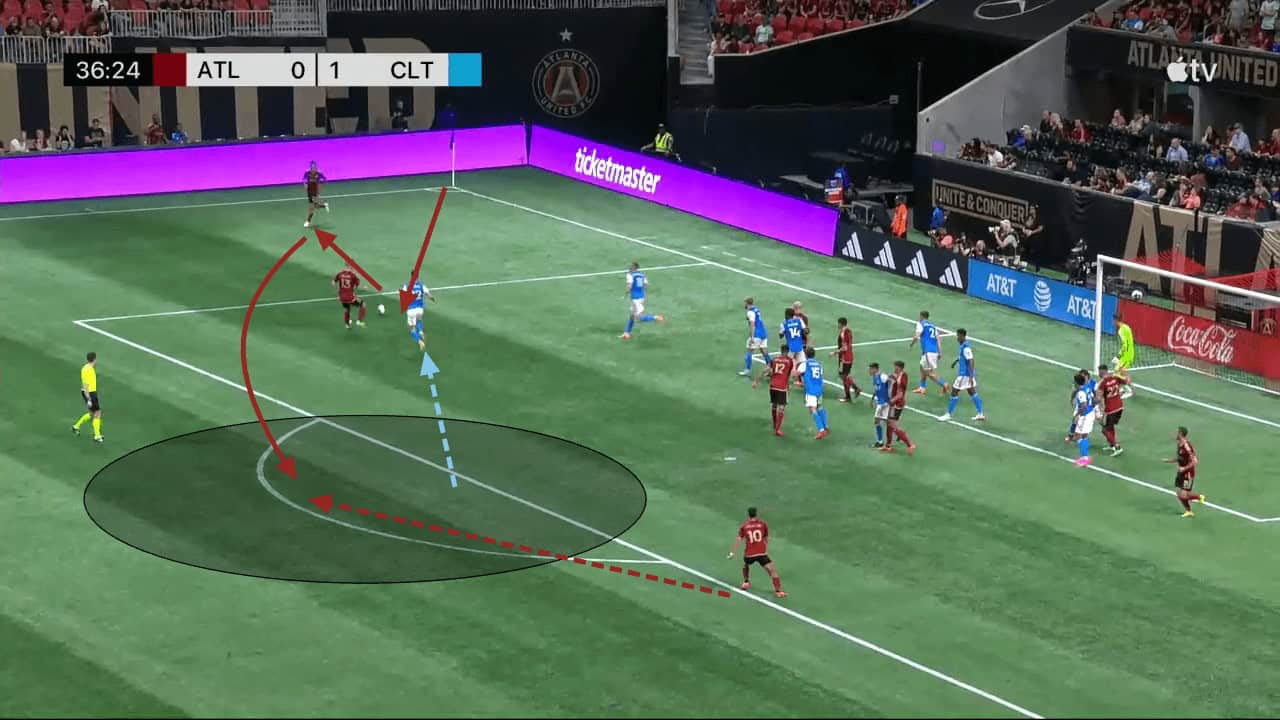
One final way in which Atlanta have been able to find the free player on the edge of the box has been through the use of screens. In the case of crosses to the edge of the box, Atlanta have used screens by attackers located around the penalty spot to immobilise their respective man markers. These man markers are the players who will likely close down the player on the edge of the box should the ball fall there. Defenders always attempt to stay goal side of the attacker, which Atlanta use to their advantage in these scenarios by using their player to engage in physical contact where they can physically prevent the defenders from closing down the ball.
The player in red on the right can be seen attempting to block the path of the defender, to provide Almada with more time on the ball.
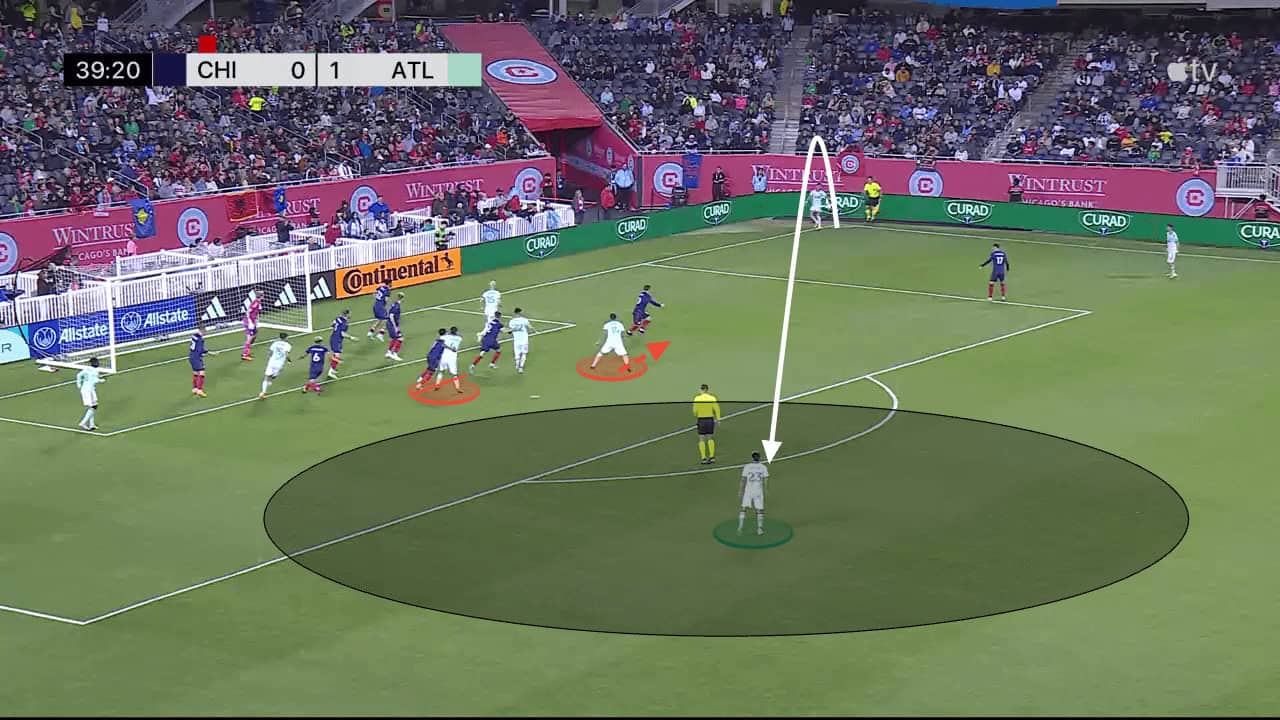
In this case, the hurried nature of defenders closing down the potential shot has left some attackers open in space which Almada uses to his advantage in order to deliver the ball into a more dangerous position inside the six-yard box. The lack of coordination in the defensive line stepping up is also used to Atlanta’s advantage where they move in the opposite direction to the Chicago Fire defenders to create additional space for themselves.
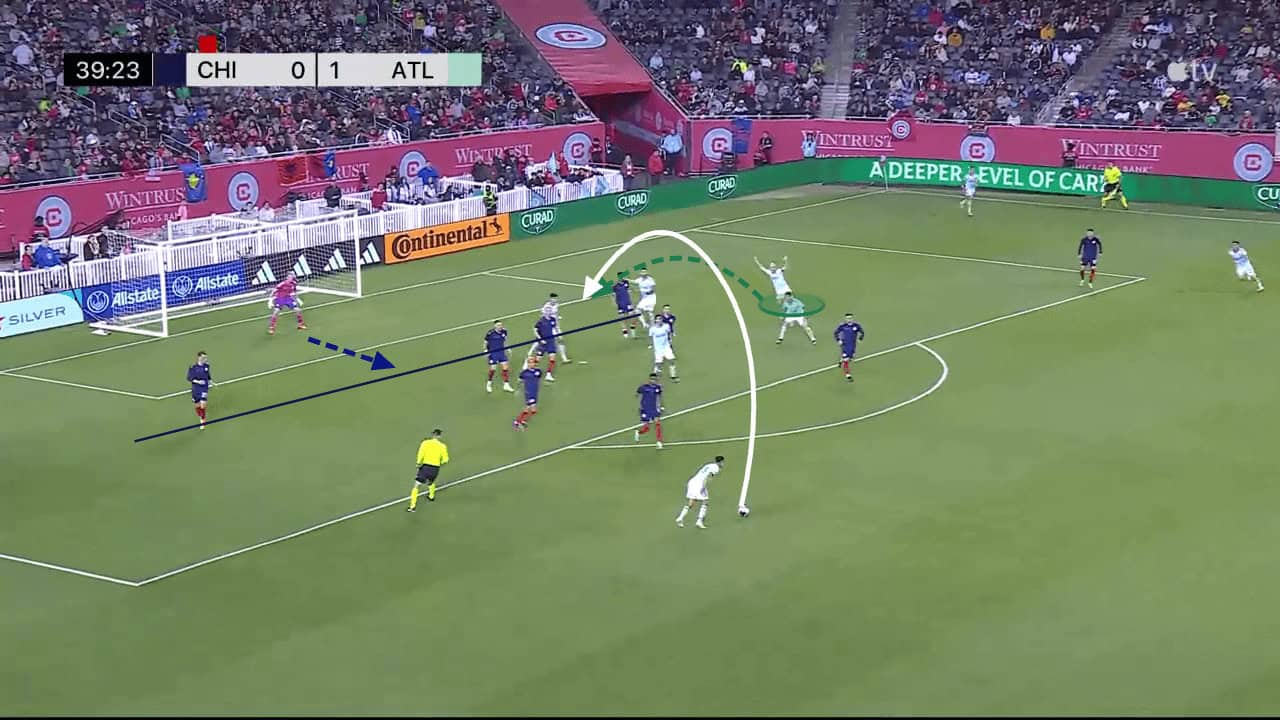
Conclusion
Atlanta United have come out the block firing in terms of their set pieces, which has been vital to their placement in the league. Their ability to utilise a varied number of routines, incorporating both short routines and direct crosses into the penalty area has made them extremely difficult to prepare for in the early stage of the season, which is why 29% of their goals have come from dead-ball situations.
This tactical analysis has detailed the different ways in which Atlanta United are a massive threat from set-pieces, and why their secret weapon in Thiago Almada causes problems from both direct and short routines, which not many other sides in football possess.






Comments